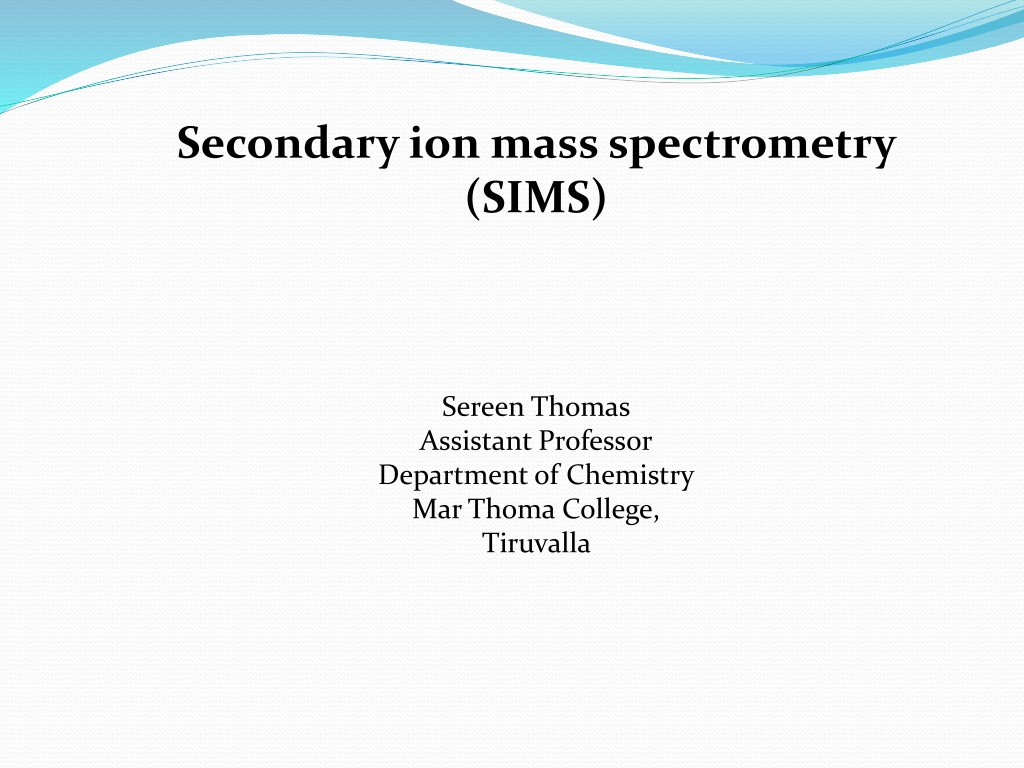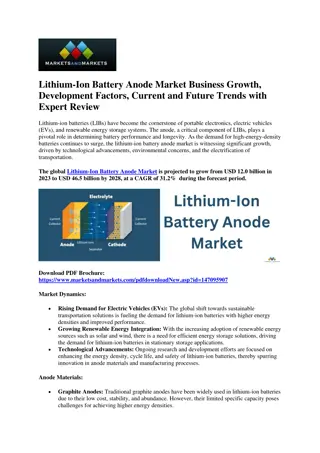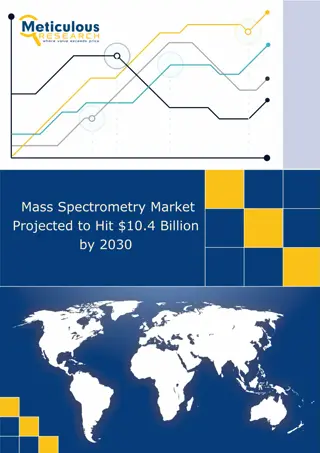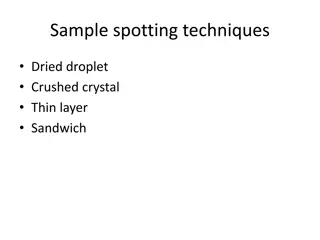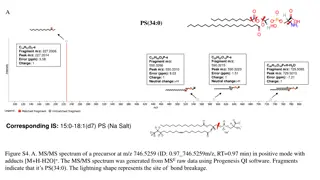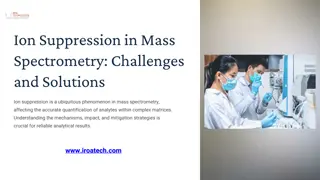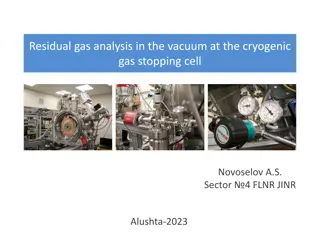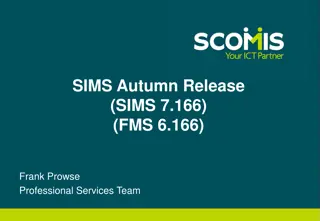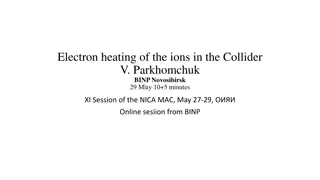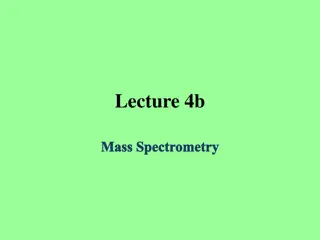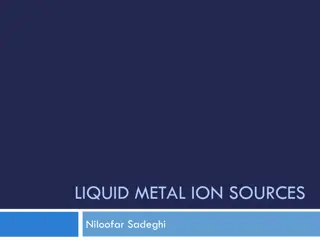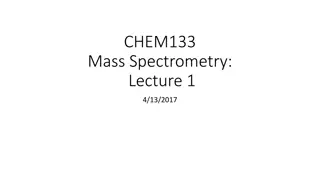Secondary ion mass spectrometry (SIMS)
Secondary Ion Mass Spectrometry (SIMS) is a powerful technique used in materials and surface science for analyzing solid surfaces and thin films by sputtering with a primary ion beam. It allows the measurement of elemental, isotopic, and molecular composition, with advantages including high sensitivity, detection of a wide range of elements, and precise isotopic ratio measurements. SIMS instrumentation has evolved over time, enabling localized analysis and the generation of two-dimensional ion images.
Download Presentation

Please find below an Image/Link to download the presentation.
The content on the website is provided AS IS for your information and personal use only. It may not be sold, licensed, or shared on other websites without obtaining consent from the author.If you encounter any issues during the download, it is possible that the publisher has removed the file from their server.
You are allowed to download the files provided on this website for personal or commercial use, subject to the condition that they are used lawfully. All files are the property of their respective owners.
The content on the website is provided AS IS for your information and personal use only. It may not be sold, licensed, or shared on other websites without obtaining consent from the author.
E N D
Presentation Transcript
Secondary ion mass spectrometry (SIMS) Sereen Thomas Assistant Professor Department of Chemistry Mar Thoma College, Tiruvalla
Outline Historical Background of SIMS What is SIMS? Working Principle of SIMS Instrumental Structures What properties can be measured with SIMS? Advantages and Disadvantages
History of SIMS In 1910 British physicistJ. J. Thomson observed a release of positive ions and neutral atoms from a solid surface induced by ion bombardment. Improved vacuum pump technology in the 1940s enabled the first prototype experiments on SIMS at the University of Vienna, Austria In the early 1960s two SIMS instruments were developed. One was an American project for analyzing moon rocks the other at the University of Paris. These first instruments were based on a magnetic double focusing sector field mass spectrometer and used argon for the primary beam ions. Recent developments are focusing on novel primary ion species likeC60or ionized clusters of gold and bismuth
SIMS Secondary ion mass spectrometry (SIMS) is based on the observation that charged particles (Secondary Ions) are ejected from a sample surface when bombarded by a primary beam of heavy particles.
Secondary ion mass spectroscopy Basic Overview
What properties can be measured/tested with SIMS? -Secondary ion mass spectrometry(SIMS) is a technique used inmaterials science and surface science to analyze the composition of solid surfaces andthin films by sputtering the surface of the specimen with a focused primaryion beamand collecting and analyzing ejected secondary ions. -These secondary ions are measured with a mass spectrometerto determine the elemental, isotopic, or molecular composition of the surface.
SECONDARY ION SPUTTERING http://www.geos.ed.ac.uk/facilities/ionprobe/SIMS4.pdf
Advantages of SIMS The elements from H to U may be detected. Most elements may be detected down to concentrations of 1ppm or 1ppb. Isotopic ratios may be measured, normally to a precision of 0.5 to 0.05%. Two dimensional ion images may be acquired. A secondary ion leaves the surface at a point close to its original location. This enables localised analysis of the sample to be undertaken and is the cornerstone of ion imaging.
The volume of material sputtered is small. Using a high- energy and high primary beam densities (dynamic SIMS) a volume of a 100 to 1000 m3 is analysed. In contrast, using lowenergy and low primary beam densities (static SIMS) the material sputtered is exceedingly small, with surface mono-layers lasting hours or days. Three dimensional ion images may be acquired by scanning (rastering) the primary beam and detecting the ion signal as the sample is gradually eroded. Little or no sample preparation may be needed.
Limitations of SIMS The material sputtered from the sample surface consists not only of mono-atomic ions but molecular species that in places can dominate the mass spectrum, making analysis of some elements impossible. The sputtering process is poorly understood. No quantitative model currently exists that can accurately predict the secondary ionisation process. In order to obtain quantitative information a suitable standard has to be used and empirical corrections applied. The sensitivity of an element is strongly dependent on the composition of the matrix and the type of primary beam used. Standards should, therefore, be close to the composition of the unknown. This is particularity true for isotopic analysis. Samples must be compatible with an ultra high vacuum.
TYPICAL APPLICATIONS of SIMS Analyzing biological materials The investigation of possible links between glass failure and polishing residue in optical components used in powerful lasers,
